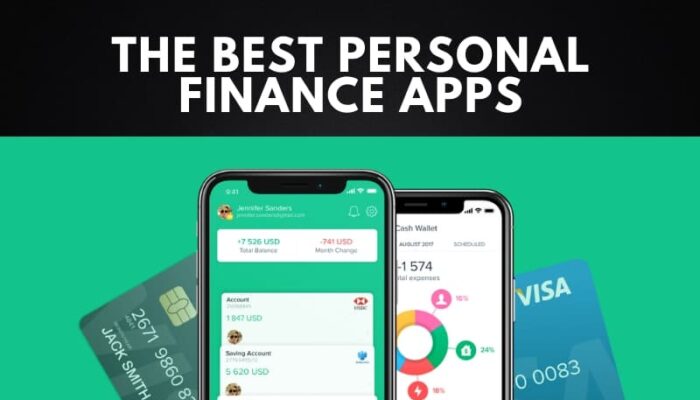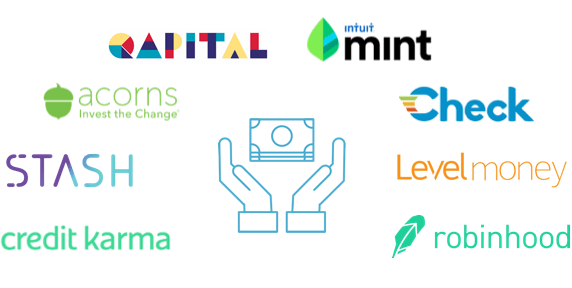A little over a year ago I wrote this article (linked here) about the top…
My Top 3 Personal Finance Apps of 2023

It’s that time of year again, folks.
Time to review the personal finance apps that have saved me and those closest to me time, money, pain and heartache. Okay, heartache might be stretching things a little, but you get the drift.
Fintech – which is where much of the personal finance innovation originates – did it pretty tough in 2023.
Capital markets have slowed, is the plaintiff and well-trodden trope (particularly from founders who can’t currently raise a dime), and whilst this is inarguably true, I think what we’re also seeing is that bad ideas are no longer being funded in the scatter-gun way they were in years gone by.
The free money ain’t free any more, and you’re certainly going to have to show more than an idea, a deck and an MVP to get your hands on it.
Whilst there have been plenty of fallen Fintech soldiers this year, with yet more in the death-throes and a bunch of highly opportunistic acquisitions (read: interesting exits), there have been some standout success stories a solid number of raises, and a good number of solid Fintech businesses simply going back to basics with disciplined cost-reduction and a focus on a pathway to profitability instead of growth at all costs.
[One of the best examples of Fintech getting a much-needed shot in the arm was WeMoney taking home a record 3 Pause Awards – article here]
Anyhoodle, back onto the apps that have been revving my engine this year, noting that my favourite Fintech companies remain unchanged (as they have pretty much since 2016). You know who you are Stockspot and Raiz.
1. UP
The benchmark for all consumer financial apps in Australia, UP combines banky things with PFM-y things in a flawless design package, at once accessible, fun, gamified, and, get this, financially practical.
For those who don’t yet know UP, it’s essentially a banking app created from scratch by a software company, unbeholden to legacy technology & systems, nor the onerous requirements of a banking license.
I use UP for an increasing amount of my financial life, and I’m not alone. 700,000 other (mostly) young Australians use UP for spending, saving and, now, taking steps to buying a home through UP’s in-app “home zone” that assesses your readiness to buy a house and then either helps you do so, or helps nurture you until you might be ready to do so.
UP is probably just a few features away from being ready to take over your entire financial life.
2. Wise
Being an ex-pat, the movement of money to and from the mother-land has always been a clunky and expensive process, taking both precious time and a filthy fat commission on either side of the transaction.
Enter Fintech, and companies such as Wise (and others), who set out to challenge the status quo and disrupt the old way of doing things.
Now if we need to get money across the world to or from Blighty, we can do so instantly and cheaply without being stung by a horrific exchange rate and a fee to send AND receive the funds.
The app essentially gives me a UK bank account linked to an Australian bank account so I can both send and receive UK pounds from my Aussie dollar account.
It’s so simple that even my Mum can work it out, bless her.
3. Furthr
Cashback and rewards are a big thing in Australia.
The Qantas Rewards loyalty program has around 13m members out of a population of around 21m adults.
Countless businesses are run using Qantas-linked credit cards, which generate loyalty points for the owners of these businesses, which are then used for business class flights.
So the concept of rewarding loyalty is understood.
There are then sites like Cash Rewards and Shopback, where you can earn cashback on your spending at certain shops (they call them merchants). These businesses have done well, but the process ‘usually’ involves online shopping online so the ‘attribution’ can be easily tracked.
What I, and I suspect others (if they knew about it), want is the ability to earn cashback on my regular and irregular shopping in-store through a card-linked or account-linked cashback scheme.
Imagine if the average household could earn a modest amount of cashback to ease the financial burden of simply existing in 2023? I don’t think anyone would say no to that, would they?
Yet, this road have been travelled before in Australia.
First there was Plastiq (RIP) and then there was Motza (RIP) – I wrote about Motza back in 2020 when it made my Top 5 Fintech Apps of the Year back then – link here. I love this concept.
Now there is Furthr which allows me to link a card or account once (in much the same way as Raiz), and earn 5% cashback instantly on anything I spend at their affiliated merchants (shops).
Unlike rewards / loyalty points, the concept of simple, card / account-linked cashback is not yet well understood in Australia, primarily because of the clunky way it’s been hitherto deployed. In markets like the US and the UK, these companies are being heavily invest in or acquired.
Summary
Whilst 2023 has been undoubtedly tricky sailing for most, I think of it more of a regression to the mean.
Good businesses, run shrewdly will weather the storms.
If your Fintech app delivers enough utility to enough users, and you can find them efficiently, there is a decent chance of success.
If you can’t or you don’t, it is likely you’ll perish. And, if that’s the case, that’s fine. At least you were in ‘the arena’.
SFD

